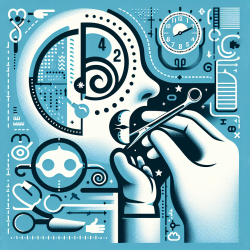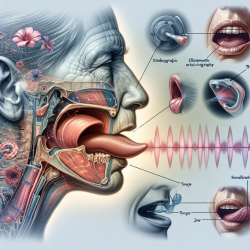Introduction
In the realm of youth mental health, psychosocial distress is a pressing issue. Defined as the emotional and psychological suffering triggered by social and psychological stressors, it is prevalent and often leads to various mental health disorders. With nearly half of these disorders manifesting by age 14, understanding the neurophysiological underpinnings of psychosocial distress is crucial. A recent study titled "Theta oscillatory dynamics serving cognitive control index psychosocial distress in youth" sheds light on this topic, offering valuable insights for practitioners.
The Study: A Deep Dive into Theta Oscillations
The research employed the National Institute of Mental Health's Research Domain Criteria (RDoC) framework to explore neural oscillatory markers of psychosocial distress in youth. Utilizing magnetoencephalography (MEG), the study examined 39 peri-adolescent participants who completed the NIH Toolbox Emotion Battery and the Eriksen flanker task. The findings revealed a strong association between psychosocial distress and pediatric psychopathology, highlighting theta-band neural cognitive interference in the left dorsolateral prefrontal cortex (dlPFC) and middle cingulate cortex (MCC).
Key Findings and Implications
- Elevated Spontaneous Activity: Greater psychosocial distress was linked to increased spontaneous activity in both the dlPFC and MCC, alongside blunted theta oscillations in the MCC.
- Hyperconnectivity: The study found stronger phase coherence between the dlPFC and MCC, indicating hyperconnectivity associated with higher psychosocial distress.
These findings suggest that disruptions in theta oscillations and connectivity patterns may serve as neural markers for psychosocial distress in youth. Practitioners can leverage these insights to enhance diagnostic accuracy and tailor interventions.
Practical Applications for Practitioners
For practitioners, understanding the neural dynamics of psychosocial distress can inform therapeutic strategies. Here are some actionable steps:
- Early Detection: Utilize assessments that measure theta oscillations to identify at-risk youth.
- Targeted Interventions: Develop interventions focusing on enhancing cognitive control and reducing psychosocial distress.
- Further Research: Encourage continued research into neural oscillations and their role in mental health to refine treatment approaches.
Conclusion
The study on theta oscillatory dynamics offers a promising avenue for understanding and addressing psychosocial distress in youth. By integrating these findings into practice, practitioners can improve outcomes for young individuals facing mental health challenges. For those interested in delving deeper into the research, the original paper provides a comprehensive overview of the methodologies and results.
To read the original research paper, please follow this link: Theta oscillatory dynamics serving cognitive control index psychosocial distress in youth.










